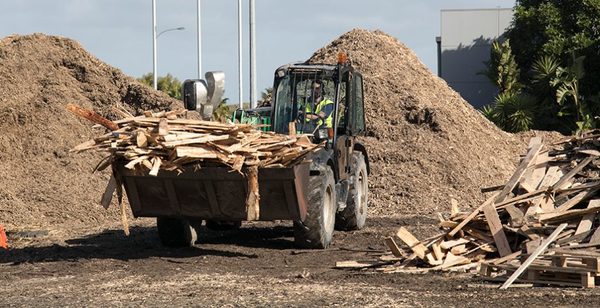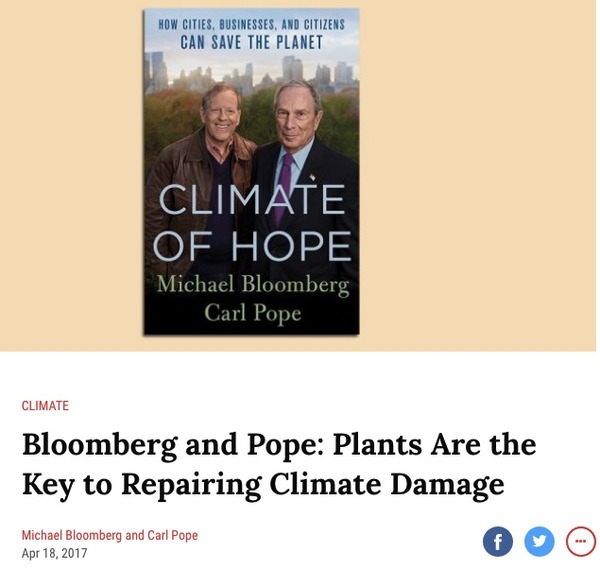![]()
Partners Wanted For Waste To Energy Project Trials
You likely already know that APL’s technology provides significant value in the areas of waste management and renewable energy, while also making substantial contributions in the fight against climate change. Turning green waste into energy is a win-win-win solution. As pointed out in an article this week in The Guardian, “Agricultural waste, which would otherwise be a major source of greenhouse gas emissions if burnt, could instead be turned into a biochar – a process that produces more energy than it consumes – and the biochar could then be used to enrich agricultural soils with carbon. Research suggests that biochars not only boost crop yields, but could lock away carbon for several thousand years.” With recent significant improvements to our technology, we believe the value proposition is now stronger than ever.
However, you may also know that biomass gasification isn’t yet as easy to finance as solar, which is a barrier to scaling and realizing the full value of the technology. So, to make our solution more accessible, we’re now offering turnkey waste-to-energy (WTE) services, wherein APL or its affiliates will own and operate the equipment at your location. You would not be responsible for the capital cost of the equipment, and- because we can dispose of waste and generate energy more cheaply that other technologies- our fees would simply come from the waste management and electricity use savings from using our services. There’s also an option to provide onsite heating and cooling as well, if needed.
This fee-for-service model provides a simple WTE solution that offsets both waste management and power consumption costs for customers. The compact, modular, and turn-key design of the Power Pallet enables us to scale the service as needed. Projects will be operated in a net metering situation similar to solar, but would have the additional value streams of biomass waste processing and provision of heat and cooling services, not to mention the flexibility of having mobile units.
We plan to start offering our WTE service model here in Northern California, then across the state, then wherever there’s a good fit. We are targeting the first installations to begin producing power in the SF Bay Area in the second half of 2017. This pilot program will also be used to refine the business model in preparation for general release in 2018.

This work is being enabled in part with strong support from the state of California; the California Energy Commission has awarded us $3M in grants in recent months to continue to refine our products, making them more efficient and easier to use.
The need for this kind of solution clear: climate change is causing a mounting biomass solid waste crisis, which is in itself contributing significantly to climate change. We intend to help break this cycle. Last fall, we started sounding the warning about the impacts of climate change on our forests here in California, a crisis that continues to deepen. The latest climate clarion call is from Southern California, where the transition to a landscape wholly devoid of urban trees––in parks, on campuses, and in yards––could happen in just the next generation.

We are now looking for qualified demonstration sites to conduct the most near-term WTE projects, with the following characteristics: located within two hours of the San Francisco Bay area, significant onsite energy use (around 100kW or more), and onsite biomass waste processing that’s either revenue neutral or a cost center. If these characteristics describe a site that you own or to which you have access, and which you would like to be considered, please fill out the attached form. We will get back to you right away if your site fulfills the requirements for a successful project.
OPEN HOUSE this Friday night, 5-7pm
Our regular monthly open house is coming up this week. Please RSVP so we know how many guests to plan for, then drop by for pizza cooked in a gasifier-powered oven, plus cold beer and soft drinks, and all the gasifier talk you can eat.
Negative emissions tech: can more trees, carbon capture or biochar solve our CO2 problem?
As noted above, The Guardian newspaper in the UK has a thoughtful look at this promising question this week. Click here to read all the details.
The business, and climate, case for biomass
The former Mayor of New York City, Michael Bloomberg, and the former head of the US environmental group Sierra Club, Carl Pope, have written a much deeper dive into the same topic as the Guardian article in their new book “Climate of Hope.”

They write, “We have phenomenal machines to do this job — they are called plants, and they exist to take CO2 out of the atmosphere and turn it into organic matter in the soil. (Certain kinds of rocks also sequester CO2 in very large quantities, but our ability to influence the pace of such mineralization is much more limited than our impact on the biosphere and plant life.) What does it take to trip the biosphere — the globe’s collection of animals and plants — into a massive carbon-storing mechanism?”
The climate crisis is making new heroes. Meet Matt Rogers, founder of NEST
Every day, all over the world, new heroes in the climate struggle are emerging from unlikely places. Case in point: Matt Rogers. After working at Apple on some of this century’s most iconic products, Matt left to found NEST, which makes home thermostats. Not very sexy, perhaps, but their combination of sleek design and innovative performance is driving users to install millions of them. This, in turn, has already avoided the equivalent of more than 2 million tons of carbon emissions from burning coal. You can learn more about Matt’s impact, and the work he’s enabling, in this Medium post.
As always, thank you for your interest in our work. If you have any questions, or would like to discuss buying some of our equipment, email info@allpowerlabs.com or call toll-free +1 888-252-5324.
-ALL Power Labs
